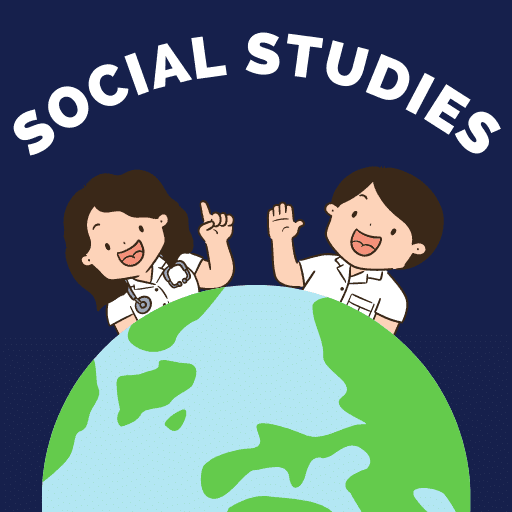Short & Long Answer Question - Silk Road | English Class 11 PDF Download
Short Answer Type Questions
Q1. What prompted the author to opt for the shortcut despite the presence of high mountain passes?
Ans. The shortcut offered a more direct route towards Mount Kailash in the southwest direction while traversing the mountain passes could have resulted in breathing difficulties. Furthermore, the absence of snow along the shortcut ensured a smoother journey.
Q2. After departing from Ravu, what did the author observe in the vast open plains?
Ans. These expansive plains were characterized by dry pastures, with only a few gazelles spotted grazing on the grass. As the plains transitioned into rockier terrain, the author came across a sizable herd of wild asses.
Q3. What sights did the author and his companions encounter in the rocky wilderness?
Ans. They encountered shepherds tending their flocks, who, upon noticing their car, would pause and stare, sometimes waving at them. As the track approached the sheep, the animals would alter their direction.
Q4. How did the author respond to the Tibetan mastiff?
Ans. The Tibetan mastiff, a colossal black dog, stood guard outside the dark tents of nomads. The dogs would hold their heads high and fix their gaze on the approaching car, barking and running swiftly toward it. They exhibited no fear of the car and only relented after chasing it away from their territory.
 Q5. Why did Tsetan stop the car and jump out of it?
Q5. Why did Tsetan stop the car and jump out of it?
Ans. Tsetan stopped the car and jumped out because there was a patch of snow about fifteen metres ahead, with a dirt trail beyond it. The snow flanked the road on either side, and the steep bank made it impossible for the vehicle to bypass the snow. The icy surface posed a slipping hazard, which could lead to the car overturning. To address this, Tsetan began throwing handfuls of dirt onto the ice, and others joined him in this effort.
Q6. Why did the author complain of headaches? How did he get relief?
Ans. The author was not used to high-altitude climbing. He complained of a headache when they had crept past 5,400 meters. He took gulps from his water bottle. This helped somewhat. His headache cleared as they moved down the other side of the pass.
Q7. Give, according to the author, a description of the top of the pass.
Ans. They reached the top of the pass at 5,515 meters. The top was marked by a pile of stones. These were decorated with white silk scarves and ragged prayer flags. The author and his companions took a turn around the cairn, in a clockwise direction as it was a tradition among the Buddhists.
Q8. Why, do you think was the author perturbed at the loud hiss emitted by the car?
Ans. Tsetan partially unscrewed the top of the car's petrol tank, which caused a loud hiss sound. This noise was due to the lower atmospheric pressure allowing the fuel to expand. The author felt perturbed by this, considering it a potential danger.
Q9. What do you learn about the salt lake on the other side of the pass?
Ans. The salt lake was dry. It was on the other side of the pass. The plateau was covered with hollow areas of low flat lands near water and brackish lakes. These were the remnants of the Tethys Ocean. This ocean bordered Tibet before the great continental collision lifted it skyward.
Q10. What activities were going on at the dry salt lake?
Ans. The dry salt lake was covered in layers of salt, creating a striking white landscape. Workers were actively loading trucks with large piles of salt. They used pickaxes and shovels, dressed in long sheepskin coats and salt-covered boots to protect themselves from the harsh conditions. To shield their eyes from the intense glare, they wore sunglasses as a steady stream of trucks transported the salt away.
Q11. Which incident does the author remember as they reached a small town, Hor?
Ans. As they arrived in the small town of Hor, the author recalled suffering two punctures during their drive from the salt lake. Tsetan was keen to fix the tyres since they had no spares left. They stopped at a tyre repair shop where they said farewell to Daniel, who found a ride back to Lhasa in a truck. The second tyre Tsetan replaced was in poor condition, further emphasising the need for repairs.
Q12. What is the importance of Hor? How did the author feel there?
Ans. Hor was a small town located on the main east-west highway that followed the ancient trade route from Lhasa to Kashmir, situated on the shore of Lake Manasarovar. However, the author found Hor to be a grim and miserable place, lacking any vegetation and filled with dust and rocks. The town was also littered with heaps of garbage, which contributed to the author's negative impression.
Q13. Why is Lake Manasarovar Tibet’s most venerated stretch of water?
Ans. Lake Manasarovar is revered as Tibet's most sacred body of water, primarily because it is believed to be the source of four major Indian rivers: the Indus, the Ganges, the Sutlej, and the Brahmaputra. While only the Sutlej flows directly from the lake, the headwaters of the other rivers originate nearby on the slopes of Mount Kailash. This connection to significant rivers contributes to Lake Manasarovar's esteemed status in Tibetan culture.
Q14. Why did the night at the guest house in Darchen turn out to be another troubled one?
Ans. The author had to kill time at Hor. It was an open-air rubbish dump. He went from one place to another without any particular purpose. This set off his cold once again. One of his nostrils was blocked again as he laid down to sleep in Darchen. He could not get enough oxygen to breathe. He had to pass a sleepless night.
Q15. How does the author recount his experience at the Darchen medical college?
Ans. The Tibetan doctor had no white coat or other apparatus. He looked like any other Tibetan in his thick pullover and woolly hat. He felt the veins in the author’s wrist and asked him a few questions. He diagnosed his malady as ‘‘a cold and the effects of altitude.’’ He prescribed a five-day course of Tibetan medicines. The author had a sound sleep after his first full day’s course.
Q16. The author says, ‘‘I’d timed my arrival for the beginning of the season, but it seemed I was too early.’’ How does Darchen appear at the height of the pilgrimage season?
Ans. The author did not experience the height of the pilgrimage season in Darchen, but he learned that the town was lively and filled with visitors during that time. Many pilgrims brought their own accommodation, setting up their tents around the town's edges. These tents extended out onto the plains, creating a bustling atmosphere.
Q17. What options did the author have after Tsetan left him?
Ans. His only option was to wait for some other pilgrims. The route of pilgrimage was well trodden. But he did not want to go alone. Parts of the route were liable to blockage by snow. He had no idea whether the snow had cleared or not. He hadn’t come across any English-speaking person to answer this basic question.
Q18. ‘‘The author gives a picturesque description of Darchen’s only cafe.’’ How far do you agree with this statement?
Ans. The cafe was small, dark, and cavernous. It had a long metal stove that ran down the middle. The walls and ceiling were covered in striped, multicolored plastic. This cafe had a single window and a rickety table.
Q19. What did the author learn about Norbu? How did he feel?
Ans. Norbu was a Tibetan. He worked in Beijing at the Chinese Academy of Social Sciences. He had come to do the ‘Kora’. He had been writing academic papers about the Kailash Kora and its importance in various works of Buddhist literature. He had never actually done Kora himself. The author felt happy. They could do Kora together.
Q20. Why did the author’s initial relief at meeting Norbu become diluted later on?
Ans. Norbu could talk in English. He was going to Mount Kailash to do Kora. But he was almost as ill-equipped for the pilgrimage as the author was. He was very fat and found walking on a high attitude tiresome. Moreover, he wasn’t really a practicing Buddhist. All these factors diluted the author’s initial relief.
Long Answer Type Questions
Q1. What difficulties did the author encounter while crossing the mountain passes that led to the Silk Road?
Ans. The first difficulty they faced was during the ascent through the valley. The turns became sharper and the ride bumpier. The author felt the pressure building up in his ears. Suddenly Tsetan stopped the car and jumped out. A large strip of white stuff lay across the track for about fifteen meters. The bank was too steep for their vehicle to scale. They grabbed handfuls of dust and flung them over the snow. When the snow was spread with soil, Tsetan slowly drove the vehicle over it. Ten minutes later, they had another blockage. This time Tsetan drove around the snow. The steep slope was studded with major rocks. His vehicle was lurching from one obstacle to another. Once he cut off a hairpin bend. Tsetan negotiated the obstacles and they reached the top of the pass. The author took gulps from his water bottle to ease his headache caused by rapid ascent. His headache cleared as they moved down the other side of the pass. Apart from two punctures in quick succession, they faced no difficulty till they reached Hor, a small town on the main east-west highway.
Q2. How was the author’s experience at Hor in stark contrast to earlier accounts of the place?
Ans. Hor is a small town located on the main east-west highway, which follows the ancient trade route from Lhasa to Kashmir. It sits on the shore of Lake Manasarovar, Tibet's most revered body of water. This lake is significant as it is believed to be the source of four major Indian rivers: the Indus, the Ganges, the Sutlej, and the Brahmaputra, although only the Sutlej actually flows from it. The headwaters of the other rivers rise nearby, on the slopes of Mount Kailash. Earlier travellers, such as Ekai Kawaguchi, a Japanese monk who visited in 1900, described their experiences in glowing terms. Kawaguchi was so touched by the lake's sanctity that he wept. Similarly, Sven Hedin, a Swedish explorer known for his stoicism, was also deeply affected by the lake's holy waters. In stark contrast, the author found Hor to be a grim and desolate place, devoid of vegetation, filled only with dust and rocks, and littered with rubbish. He described it as an open-air rubbish dump, highlighting the vast difference between the legendary beauty of the lake and the reality of his surroundings. This disappointing experience stood in sharp contrast to the earlier accounts of awe and reverence.
Q3. Give a brief account of the author’s experience at Darchen before he got treatment at Darchen medical college.
Ans. At 10.30 p.m., the author and Tsetan arrived at a guest house in Darchen. The author felt tired and hungry, and the dusty drive had aggravated his cold. Despite drinking herbal tea, one of his nostrils was blocked, making him uncertain about getting enough oxygen. He attempted to sleep but switched to breathing through one nostril for better airflow. Just as he was about to drift off, he woke up suddenly, feeling uneasy. The next morning, Tsetan took him to the Darchen Medical College, which resembled a monastery. Inside, they found a dark, cold consulting room occupied by a Tibetan doctor dressed simply, without the expected medical attire. After explaining his symptoms, the doctor diagnosed him with a cold and altitude effects, assuring him he would recover enough to complete the kora. That night was troubled again, as his cold resurfaced. He struggled to breathe comfortably and felt a heavy sensation in his chest. However, after sitting up, he cleared his nasal passages. The following day, he received a course of Tibetan medicine, which included a brown powder that tasted like cinnamon and small brown pellets. After starting the treatment, he finally enjoyed a restful sleep.
Q4. How did the relationship change between the father and his son?
Ans. The poem illustrates the evolving relationship between a father and his son. Initially, they shared a close bond when the son was a child. However, as time passed and the son grew into adulthood, their relationship altered. Both father and son became preoccupied with their separate lives, leading to a disconnect. The father finds it increasingly difficult to understand his son, widening the gap between them. Despite the father's efforts to rekindle their previous closeness, he fails, resulting in frustration and anger. He reminisces about their once strong bond, feeling nostalgic, but this sorrow turns into anger, further straining their relationship. The poem thus reflects a common shift that often occurs in parent-child relationships over time.
Q5. What impression do you form of the author, Nick Middleton, on the basis of reading ‘Silk Road’?
Ans. The author, Nick Middleton, presents himself as a keen adventurer with a passion for exploration. He embarks on the challenging journey to Mount Kailash to perform the Kailash Kora, showcasing his willingness to take risks. His decision to hire Tsetan's car and bring along Daniel as a companion indicates his desire for support during this hazardous trek. Middleton's character is further revealed through his actions, such as opting for a shortcut over high mountain passes, despite the dangers of slippery, snowy roads. He possesses a sharp eye for detail, which allows him to observe and describe the local people and their customs with sensitivity. His vivid accounts of the difficulties he faces, including headaches and sleeplessness due to the cold and altitude, highlight his resilience. His reflections on Lake Manasarovar and Hor illustrate the contrast between legend and reality, showcasing his analytical mindset. Although he dislikes dirt and disorganisation, he remains patient when faced with communication challenges after Tsetan's departure. His decision to follow Norbu's practical suggestion to hire yaks for carrying luggage demonstrates his adaptability. Overall, Middleton emerges as a sensitive and likable individual, committed to his journey.
|
17 videos|218 docs|41 tests
|
FAQs on Short & Long Answer Question - Silk Road - English Class 11
| 1. What was the Silk Road and why was it significant for trade? |  |
| 2. What goods were commonly traded along the Silk Road? |  |
| 3. How did the Silk Road influence cultural exchange? |  |
| 4. What challenges did traders face on the Silk Road? |  |
| 5. How did the decline of the Silk Road impact global trade? |  |




























